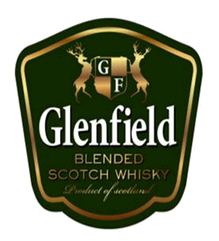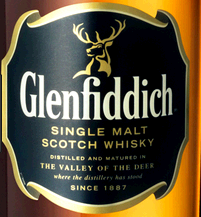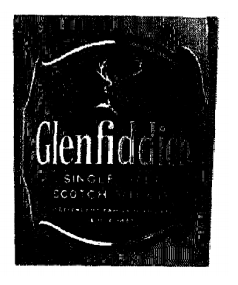William Grant & Sons, the distiller, blender and owner of Glenfiddich, the independent whisky company which markets itself as the “World’s Most Awarded Single Malt Scotch Whisky”, was unsuccessful in its recent opposition of Glenfield’s label trade mark application.
Back in 2018, Mumbai-based business man Vivek Anasane filed a trade mark application for the label of his ‘Glenfield’ Scotch whisky in an attempt to expand his drinks company into the UK. This was quickly opposed by William Grant & Sons who argued that the Glenfield mark was “visually and phonetically highly similar” to the Glenfiddich word mark.
William Grant & Sons further attempted to argue that, with both products having a label consisting off white lettering and the silhouette of a stag on a dark green background with a gold border (even though the label given as evidence was in black and white and unclear as shown below), Glenfield’s label would lead to customer confusion, likely resulting in Glenfield unfairly benefitting from the reputation of Glenfiddich’s single malt or damaging the Glenfiddich reputation “particularly if the goods offered are of a lower quality than the opponent’s goods”. In this respect William Grant & Sons attempted to rely on Glenfiddich’s “substantial goodwill in the UK” since their mark had been attached to the Scotch whisky since at least 1960.
Anasane counterclaimed, and in his defense relied on a number of UK registered third-party marks containing the word ‘GLEN’, while also submitting that “no one can claim the right in the word Glen because it describes “a narrow valley””.
The Hearing Officer determined that “conceptually, other than the common occurrence of GLEN, meaning ‘a narrow valley, especially in Scotland or Ireland’, the respective marks have no conceptual similarity” and concluded that the average consumer is deemed to be reasonably well-informed and reasonably observant and circumspect… meaning that they “will generally be the whisky drinking general public who will pay a normal level of care and attention during the purchasing process, being neither particularly low or high.” As such, while similarities between the two marks exist which “points towards a finding of a likelihood of confusion”, they were considerably offset by the obvious differences resulting in the conclusion that the brands had a “very low level of visual and conceptual similarity and a low to medium level of aural similarity”. As such William Grant & Sons’ opposition failed on all grounds and they were unsuccessful in opposing Anasane’s ‘Glenfield’ label mark.
While the judgment may at first seem surprising, especially with the two labels side by side, it is clear how the decision was reached considering that it was based on a label mark in contrast to a word mark and an unregistered label design (evidenced in black and white). This case can act as a caution to any company or business owner to review their trade mark portfolio and fill in any gaps they may have; as Glenfiddich may have had a different outcome if they had a full registered colour label mark.
Click here for the full decision.




 />i
/>i




